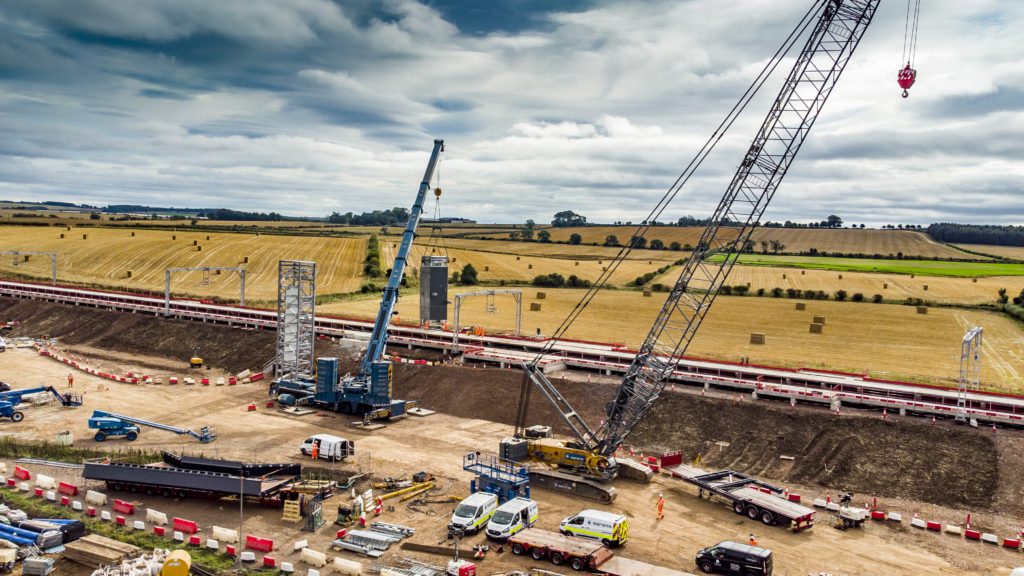
A new footbridge has been installed over the East Coast Mainline, as part of Network Rail’s £20 million Reston Station development.
Carried out by Bam Nuttall, the team worked ‘around the clock’ during a 54-hour window to allow the bridge sections to be craned in safely.
It saw six sections making up the framework of the steel bridge and lift towers be positioned beside and above the line, with the largest part weighing over 28 tonnes.


The sections had been delivered to site under police escort from Coatbridge via the M8 and A1, before negotiating the narrow streets of Reston village to get to site.
In addition to the installation of the bridge, work was also carried out to upgrade the overhead lines through the new station to make the most of the access to the line.
The works will bring rail travel to the Borders village for the first time in half a century, with it comprising a two-platform station with 70 car parking spaces and a new access road.
Lisa McKenna, Network Rail project manager for the Reston station development, said, “Installation of the footbridge marks a major milestone for the project’s delivery and we are grateful to the team at Reston for completing this challenging element of the project safely and efficiently. The bridge and lifts will help deliver easy local access to East Coast Mainline services and will make this area more attractive for inward investment and housing growth, which will both support local communities and the economy.
“Work will now continue, both on the bridge and the wider station development, which will help open Reston to new opportunities and transform this community.”
Jerry Dickson, operations manager at BAM Nuttall, added, “We’re delighted to be underway in creating another brand new station for Scotland’s Railway. BAM has a proud history in delivering new rail infrastructure in the Scottish Borders and we’re looking forward to helping even more of the region to access rail transport.”











